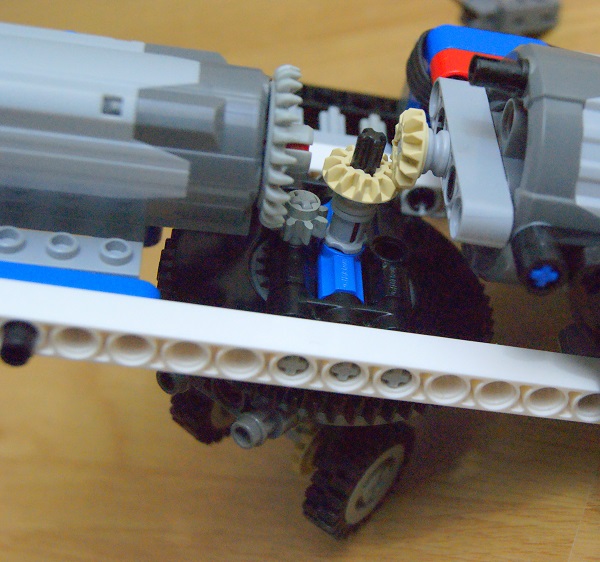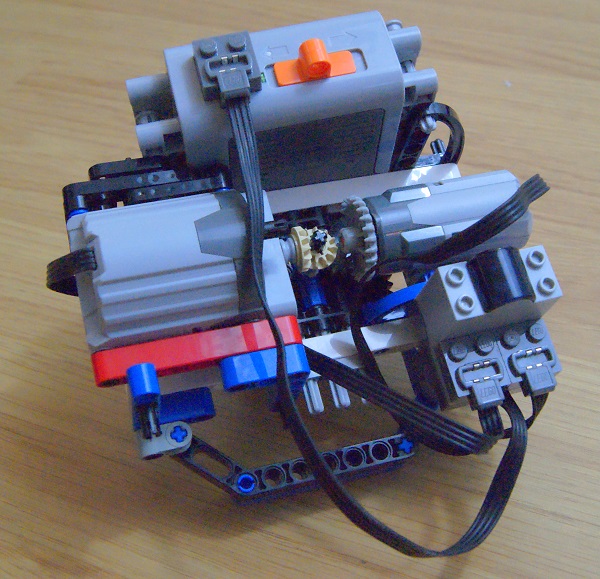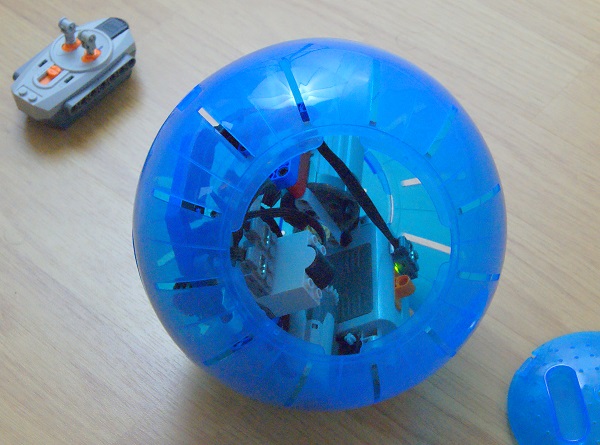The biggest problem with making a Lego version of the Star Wars BB8 droid is the round shell: there is no spherical LEGO part that is large enough to contain a motor, a battery box and the infra-red receiver. Purists, please look away now, for I have committed a sin: the shell is not a LEGO piece, but is a two-plastic sphere. basically, a giant Christmas bauble.
Here is my second attempt at BB8. The weight distribution is too high, and the mechanism flips over quite a bit. So back to the drawing board…
… and here is version 3: the wheels are further apart, and the centre of gravity is lower. I also added four “boat weights” to improve stability.
in the meantime, a fellow Brit is also working on a Lego BB8. His version has a ball made of Lego Technic parts. See https://ideas.lego.com/projects/126131/updates and http://www.brickshelf.com/cgi-bin/gallery.cgi?m=mbellis
It is possible to use a genuine LEGO sphere – as seen in this video – but there isn’t enough space inside for the Lego power functions components.
Someone else has worked out how to do the head with magnets – http://lego.gizmodo.com/someone-figured-out-how-to-build-a-tiny-rolling-bb-8-us-1761492071. That was my plan for the head too, but I can no longer prove it, and I haven’t got that far. However, their version only rolls forwards.
Development continues …


